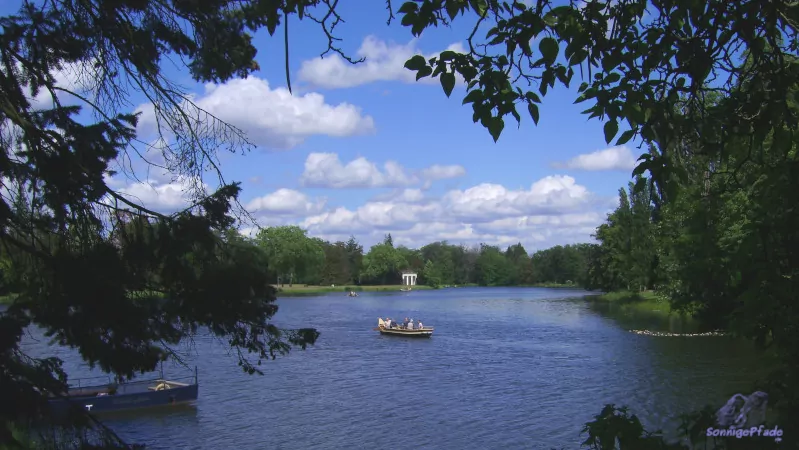
A World Cultural Heritage Site
If you want to get to know the first real landscape park in the German-speaking area, you have to visit the Woerlitz Garden and Park near Wittenberg and Dessau in East Germany. Because there a sovereign with brains and energy has not wasted his fortune on armaments, but has turned his whole principality into a garden. This is how the Dessau – Worlitz Garden Realm came into being, modeled after English and Italian garden art, which has now enjoyed the status of a world cultural heritage site for over 20 years.
There are highlights for everyone – the castle and house of the princess, the Rose Island, the Chain Bridge in the Woerlitz Park or the Stone with its artificial volcano. The diversity of the park’s design and the history that can be experienced appeals to visitors with different interests, preferences and tastes.
contains *advertising
A garden for everyone – the Worlitz Park and Garden Realm
The creator of this Garden design work was the humanistic Prince Leopold Friedrich Franz of Anhalt – Dessau, who worked in the spirit of the Enlightenment. After the death of his parents, he became sovereign at the age of 18 in 1758. And he immediately began, under the influence of the English and Italian garden art, with the transformation of his country, the principality of Anhalt – Dessau. He was supported by his friend and advisor Friedrich Wilhelm von Erdmannsdorff.
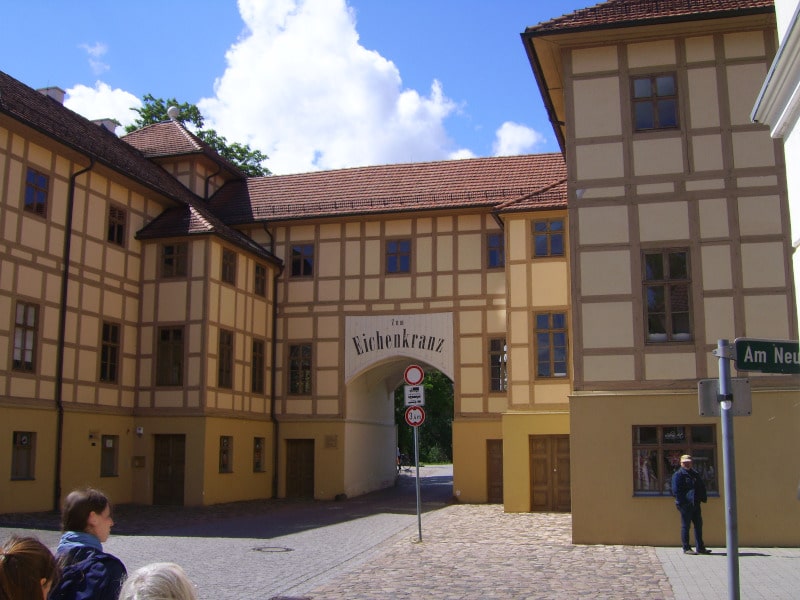
The Woerlitz Park is only a small part of the parks, gardens and the landscape design activities that more or less still perceptibly shape the view throughout the Principality of Anhalt – Dessau. The reformer was not only concerned with beautiful gardens, but also with fundamental redesign, creative thinking and educational work for his subjects, with agricultural renovations, educational projects and a wider spectrum of artistic influences.
Thus the Worlitz Garden, designed from 1764 onwards, was open to all „state children“ from the very beginning in large parts – including the palace. In the vicinity of the Worlitz Gardens, experiments in horticulture and field farming were undertaken, new breeds of animals were partly purchased and farmers were given further training.

Playful collection of architectural styles and garden design elements
With bridges and crank – ferries from island to island
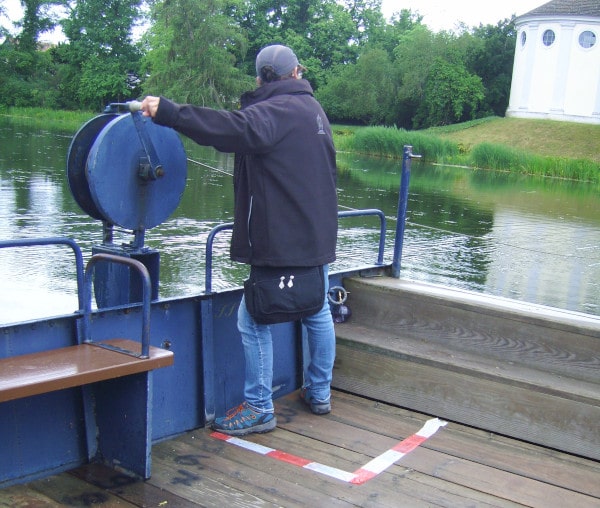
Today the park is a varied area full of sights with the lake, islands, canals and various buildings. You can walk along the winding paths or take a gondola ride on the canals through the park. Bridges of various kinds, from stylish stone bridges to a „Hornzacken“ bridge, which is supposed to remind you of a split oak trunk, to a swinging chain bridge or a floating bridge, always offer new sights and creative associations. In several places there are no bridges, but ferries, which are pulled across the canals by employees using a hand crank winch.
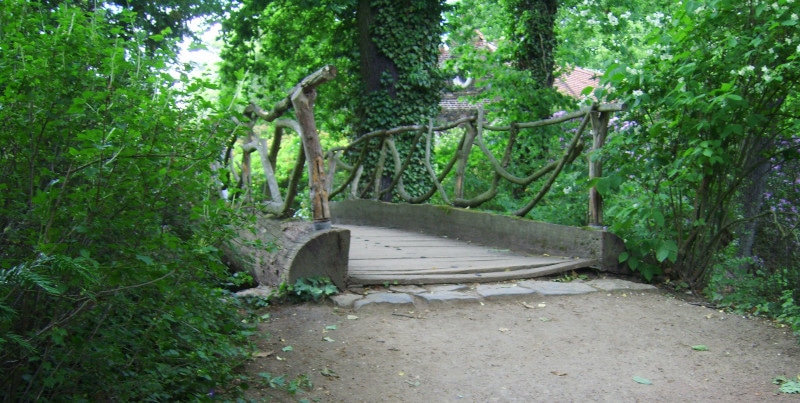
Botanical and Avi-Faunistic exciting niches in Worlitz Gardens
For guests interested in botany, the Woerlitz Park offers a rich display of a wide variety of plants – some native, some exotic, up to large old trees. Because of this and because of the watercourses, the Worlitz Garden is chilly and shady even at high temperatures over large parts, so that a visit is possible and recommendable even in the middle of summer.
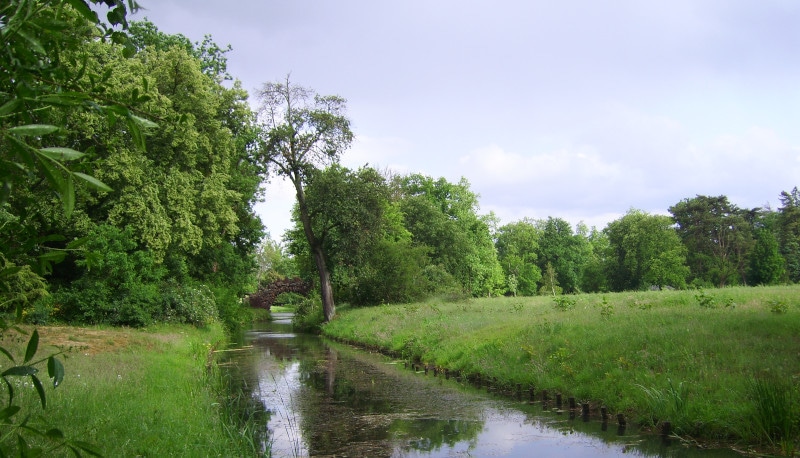
Also for ornithologists or at least bird lovers there are interesting observation possibilities depending on the seasons. Above the open areas and the lake, kites – red as well as black and kestrels – hunt. In between, house martins and barn swallows play and the swifts provide dramatic acoustics with their penetrating cries. The richly structured park landscape provides both ground-nesting birds and the secret hedge species with sufficient opportunities for breeding and food sources. And the water surfaces, including the nearby Elbe river, give terns and black-headed gulls room for flying tricks.
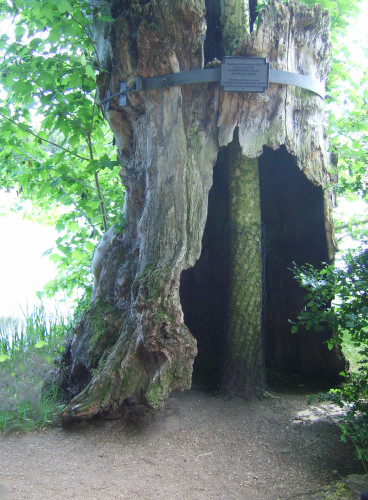
In the old tree population of the garden there are certainly enough caves for various cave breeders including bats. From the hollow trunk remainder of the Matthisson – plane tree grows since 2009 already again a young tree.
The Worlitz garden landscape is strongly structured by man and subject to a strict care regime, but still varied enough to provide enough habitat for a wide variety of creatures.
Some of the buildings of the Woerlitz Garden in detail
Even before you enter the park itself, you will notice the gatehouse, which houses the restaurant „Zum Eichenkranz“ (The oak wreath). This was built from the beginning in 1785-87 as a visitors‘ restaurant for Wörlitz and the park. The front on the city side is recognizable as a half-timbered building, while on the park side a „gothic“ facade design was chosen.

Main road or through „Neumark’s garden“?
Behind it, a path turns right into the garden, towards the manor house and the gondola station, while the road continues straight ahead. This leads over the Friederiken Bridge, which is named after the Prussian Princess Friedrike. On the right hand side you can already see the South Sea Pavilion and behind it the library pavilion in the Worlitz Gardens. In the first of these is the South Sea Collection, which Prince Friedrich received from the german explorer Georg Forster in 1775.
At the library pavilion, which is clad with lawn iron ore stones, there is another passage – up the stairs – into the park. If you are good on foot and want to escape the main hustle and bustle at the „Eichenkranz“ – entrance, you can pass through here on a short way to the labyrinth or through „Neumarks Garten“ with the ferry to the Rose Island. The names Neumark’s Garden as well as the larger Schoch’s Garden to the north are derived from the main Worlitz gardeners responsible for these parts and, in the case of Schoch, a large part of the park.
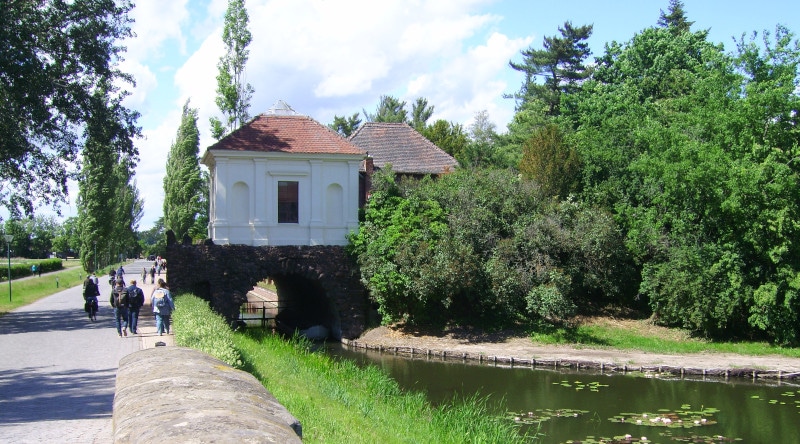
First evidence of German classicism
The Worlitz manor house was built 1769 – 1773 by Erdmannsdorff. It is a formative founding building of German classicism. The entrance front is defined by a columned porch with a triangular gable. From different directions in the park you can see the manor house over and over again over lines of sight. Today the Worlitz manor house ist one of the main buildings in the world heritage Worlitz Gardens Estate.
The „English seat“ behind it with a view of the Nymphaeum was created before the manor house in 1764/65 and is considered the first classicist building in Wörlitz. Its model was a building in Stourhead in southern England.
With the Roman Portunus temple in front of its eyes the synagogue was built. A separately accessible ritual bath is located under the prayer room. The interior decoration was destroyed during the Reichspogrom night (Night of Broken Glass). A complete destruction of the building was prevented by the garden director at that time.
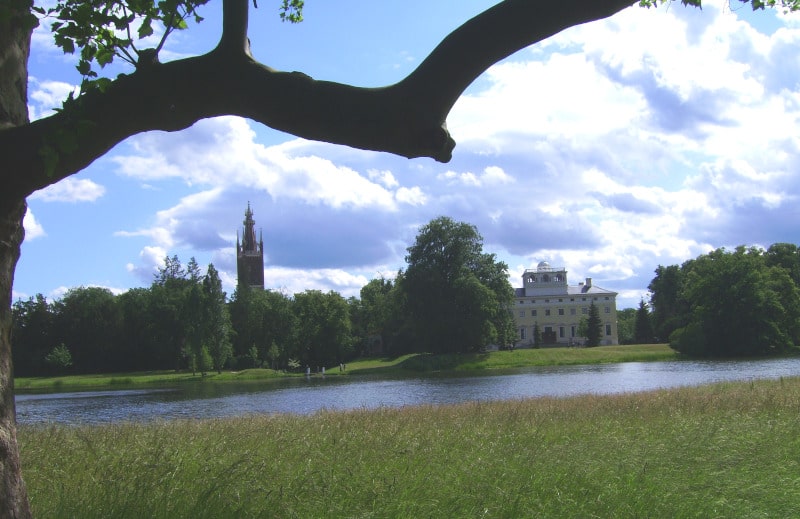
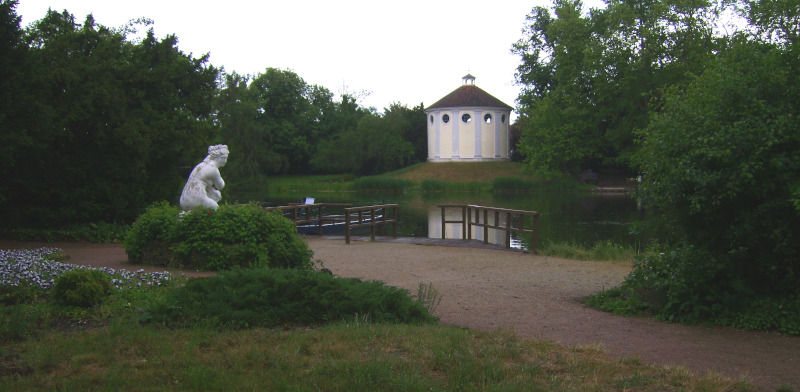
Early warning for art and nature
At the Agnes Canal stands the „warning altar“ created in 1800, which is seen as an early symbol of nature and monument protection. The clear statement is engraved as an inscription around the column: „Wanderer, respect nature and art and protect their works„.
The Gothic House in Worlitz Garden was originally a residential and working house for the gardeners, but was also used by the prince for occasional stays and to house various collections. It is said that the prince lived here for some time with the gardener’s daughter Luise Schoch. With each extension of the house, various styles from Europe, from Venice to English Tudor Gothic and Wroclaw with a loan from the town hall tower were incorporated.
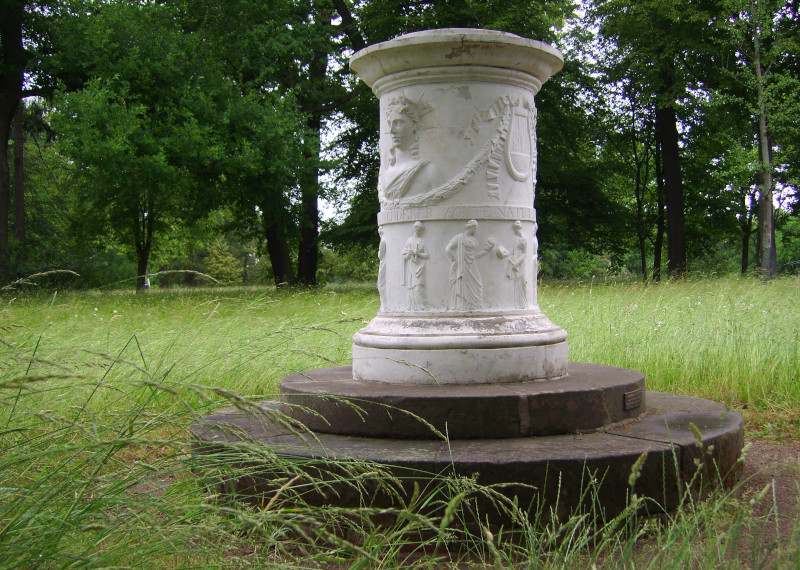
Practically vis-a-vis you can see the Flora-Temple (temple of flowers). This was modelled on another southern English building, the casino building in Wilton and was used as a music pavilion. It houses an antique sculpture and was painted with floral motifs by the court painter Johann Fischer. The forester’s house, the garden inspector’s house and the palm house are also located in the same area.
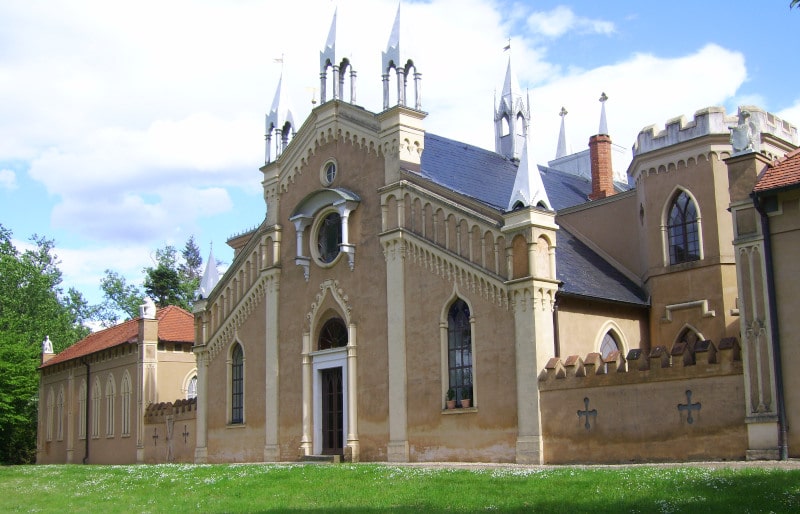
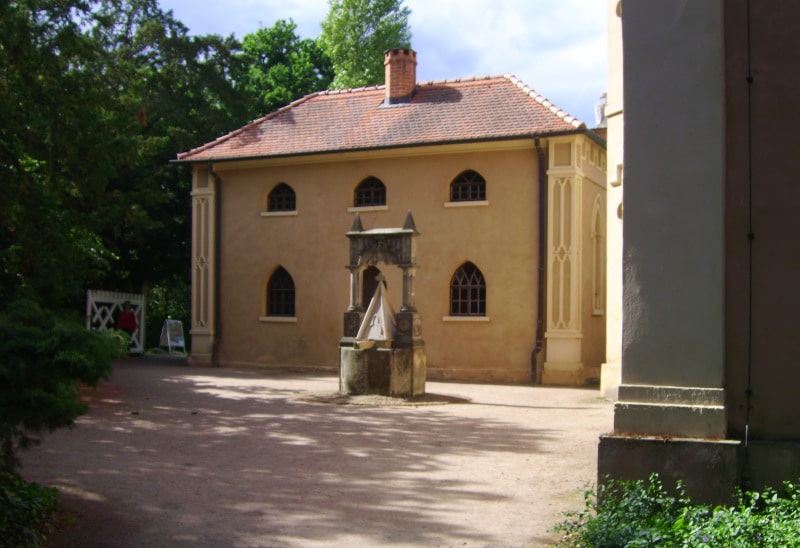
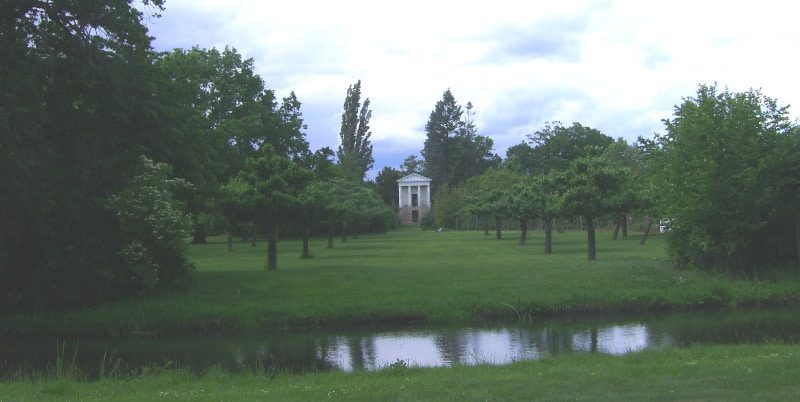
Adventure scenery for young and old in the Worlitz Park
The northern area of the Worlitz Garden around the Venus temple is especially exciting for younger visitors. You can get there via a swinging chain bridge, which is suspended between two artificial „rock walls“. The buildings are clad with quarry stone. From the chain bridge to the Venusian temple there is a wide footpath, but on the right and left you will get an insight into a kind of „underworld“. The whole thing is called the „Romantic Lot“. You can get to this lowered part of the Worlitz Gardens via the exit left of the Chain Bridge or right under the Temple of Flora, past the Luisenklippe (Luisen cliff). I advise you to take the flashlight* with you! Partly the way leads you over dark corridors in the „living and sleeping room“ as well as to the „hermit’s bed place“.
The sandstone rotunda of the Temple of Venus is a copy of the Venus Medici and is a reference point for many lines of sight in the Wörlitz Gardens. Here the Elbe dyke forms the end of the park. Integrated into the dike are walking paths, but also several buildings, such as the „Monument“ and further east the „Pantheon„.
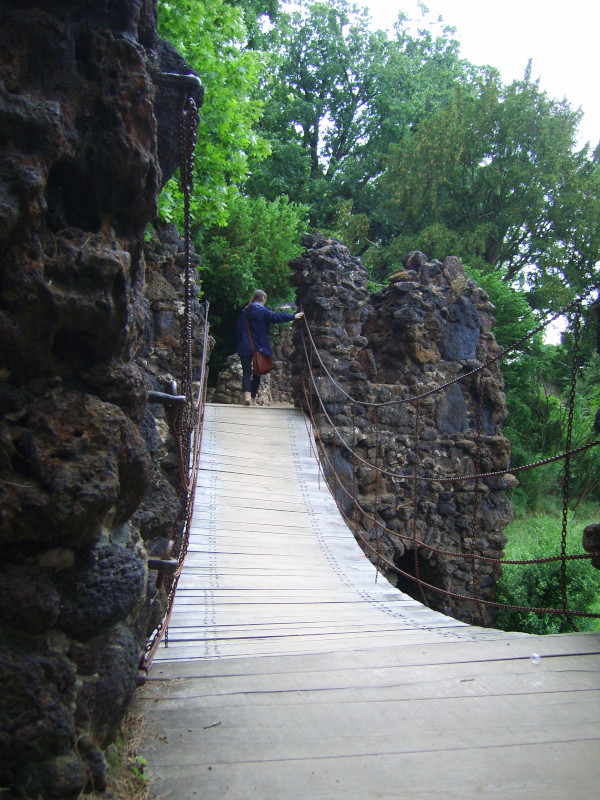
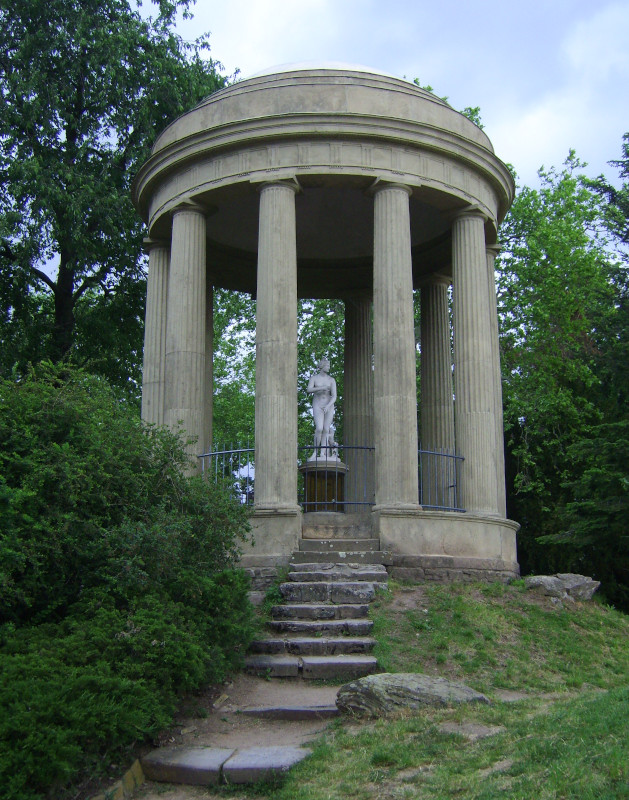
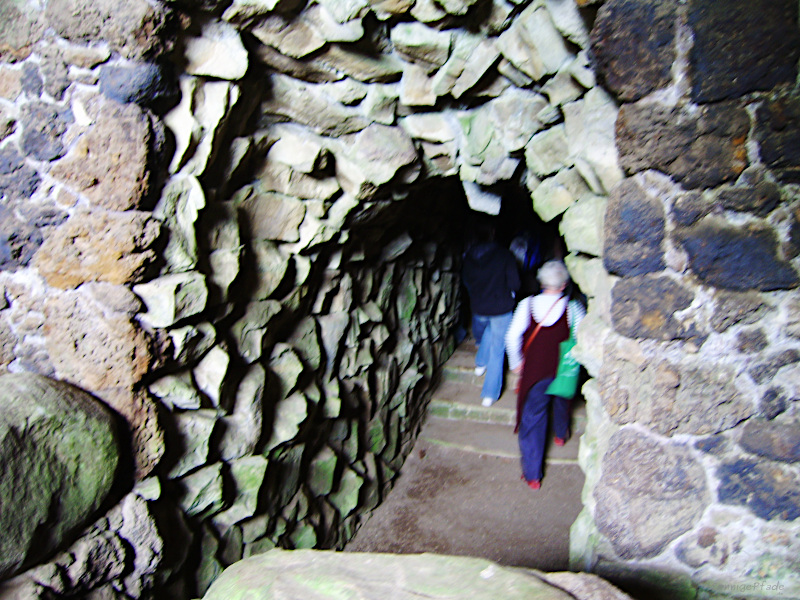
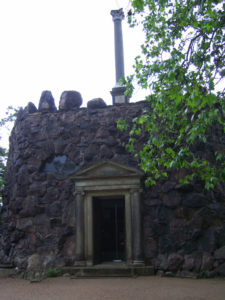
The monument, built between 1801 and 1805, is also a building covered with quarry stone. On the original viewing platform, a granite column from Rome was erected. Relief pictures of Anhalt princely ancestors are hung inside.
Along the Elbe dyke
Below the Elbe dyke on the Agnes Canal, Erdmannsdorff erected the „Golden Urn“ in 1769 in memory of the deceased first daughter of the princely family. From there, both the synagogue and the church can be seen practically side by side by means of sight lines, which is understood to be an intended sign of the Prince’s religious tolerance.
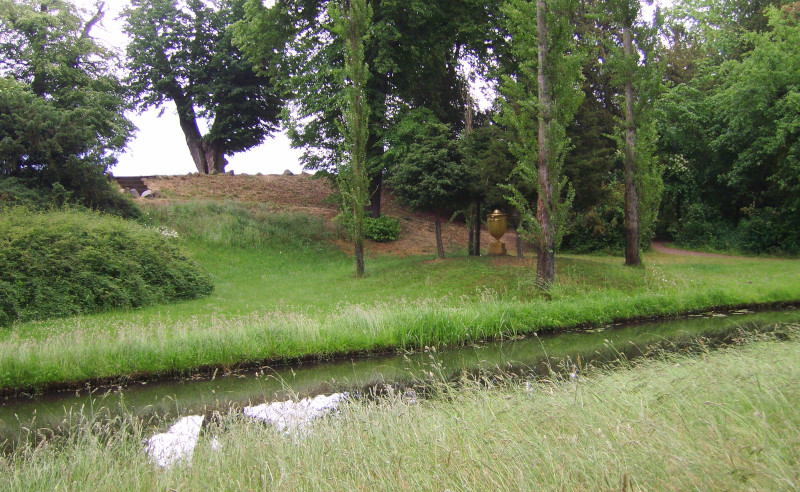
Rock island „The Stone“ with artifical volcano
I would not like to leave unmentioned the buildings of the „Italian landscape„, especially the artificial rock island „Der Stein„(The Stone). In this area of the Worlitz gardens, the experiences of stays in Italy such as the Gulf of Naples, Roman baths, gladiator school and amphitheatre, among other things, were incorporated into the garden design. The stone itself is crowned with a replica of the volcano Vesuvius and was illuminated like an active volcano on special occasions in the early years…
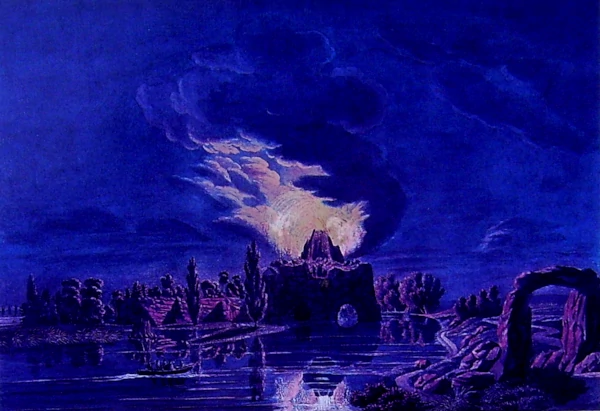
In the summer season, the Vesuvius of Wörlitz has meanwhile been ignited again from time to time as a volcano, although this is always difficult to plan for safety reasons. Both the fire danger of the drought summers in the last years and strong winds can quickly lead to the short-term cancellation of the spectacle. The „eruption of the volcano“ is thereby in connection with Worlitz Gardens concert events or play events in the environment of the rock island „The Stone“.
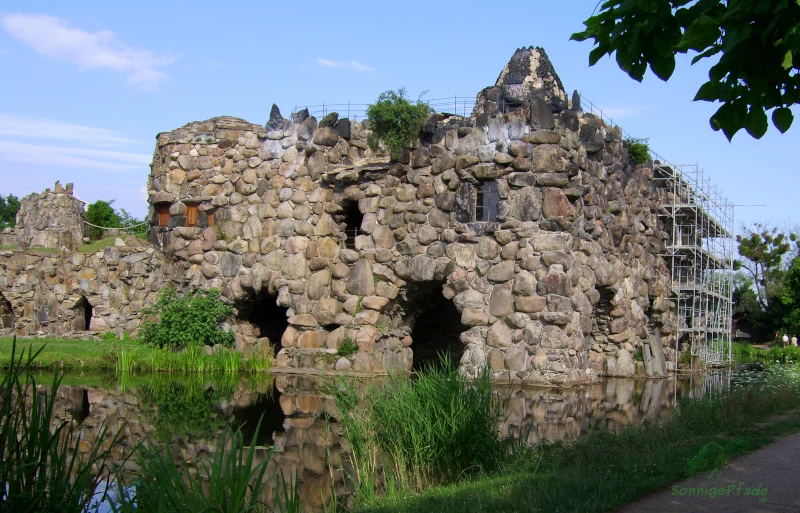
Visit tips for the Worlitz Gardens
The parks are very extensive and can hardly be surveyed down to the last corner in one day. Use one of the offered guided tours to learn more about this time of enlightenment, the progressive attitude of the prince and his comrades-in-arms and to be able to classify the manifold connections to other „celebrities“ of this time.
You can download an general plan for the Worlitz Park and the city of Wörlitz in .pdf – format here (right click on the link and choose „save target as…“).
Cycling is not allowed in the Worlitz Gardens. However, peripheral paths lead to the various accesses, so you can reach even the remote park attractions such as the Grotto of Egeria or the Italian Farmhouse by bicycle with a short walk. Dogs are allowed to enjoy the Worlitz Park, but must always be kept on a leash.
Experience Woerlitz Garden with ferries and gondolas
The english grounds of Worlitz can be visited on several days with free entrance. Only the use of the ferries will cost you a small contribution (1€ cash, reduced 50Ct.). The most important ferries are in operation from the beginning of March on Saturday and Sunday, from April daily until the end of October. The smaller ferries (Rose Island and Tea Bower Ferry) from the beginning of April. There may be temporary restrictions due to low water. Ferry times at least from 12- 5p.m., depending on the season also earlier and longer.
When the Rose Island ferries are not running, the small Rose Island in the Worlitz gardens remains inaccessible. Without ferries, Neumark’s garden with labyrinth and Elysium also becomes a secluded garden within the park. Access to this island from November to the end of March is only possible via the entrance at the South Sea Pavilion, because otherwise the Teelauben – ferry (Tea Arbor Ferry) and the Rose Island – ferries provide the connections to the large Worlitz garden area.
Gondolas in the Worlitz garden are on tour from April to October. In April and October the first gondola starts at 11:00 am, the last departure is at 3:00 pm. From May to September the gondolas run between 10:00 a.m. and 5 p.m.. A gondola ride takes 45 minutes and costs 10€ p.p., reduced 9€, children/students 3€.
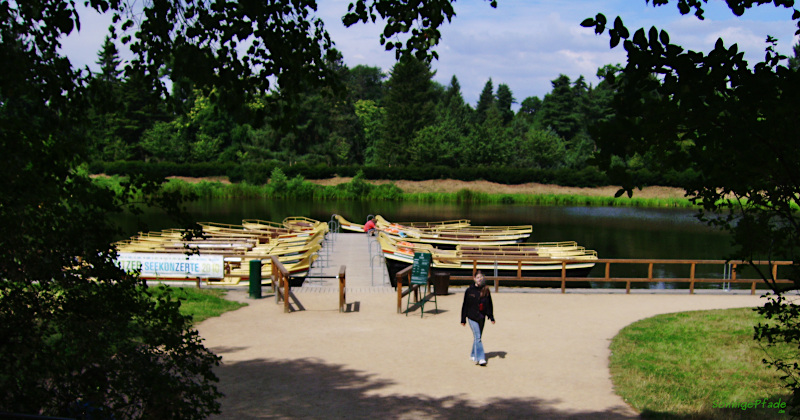
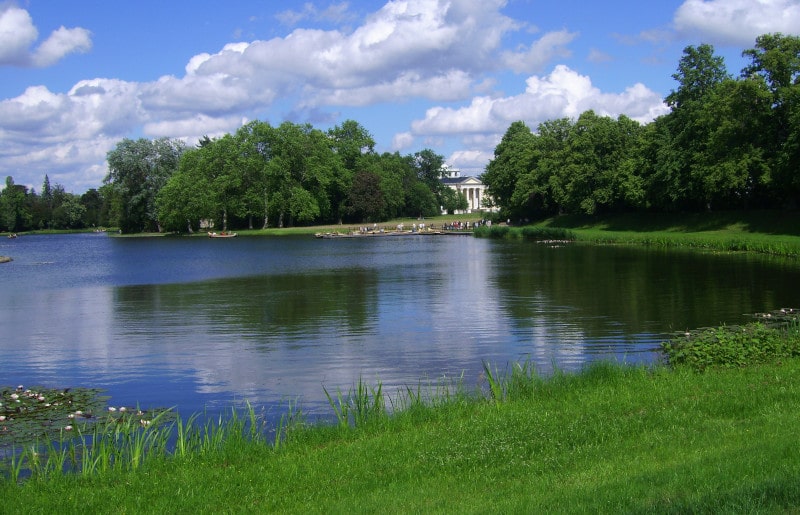
Weather and visiting hours in Dessau – Wörlitz Garden Estate
The Woerlitz Garden is accessible all year round without entrance fee. So you can spread your experience of this garden landscape over all four seasons and experience the facilities in a new way every time. Various buildings can be explored with entrance fee, partly with guided tour. For the manor house a guided tour is obligatory (approx. 1 1/4h).
The South Sea Exhibition and the Gothic House are visited individually. A combination ticket is available for the manor house (incl. guided tour) and the Gothic House.
By visiting other places of the Dessau – Wörlitz Garden Realm, the Oranienbaum Palace and Lutherstadt Wittenberg (the origin of european church reformation), it is possible to quickly extend your stay in this region to several exciting days. In the flat landscape, the bicycle is a very good means of transport, especially since the Elbe river Cycle Path provides excellent access to the area. The Elbe riverbank region also has a lot to offer in terms of landscape – the whole area belongs to the Elbe River Landscape Biosphere Reserve.
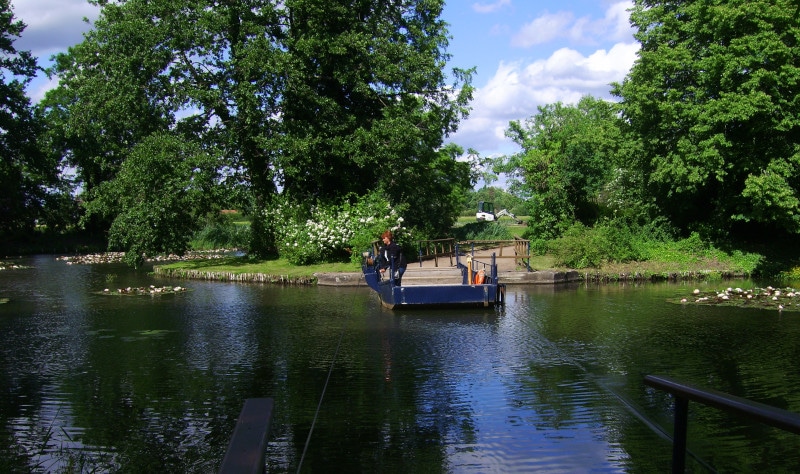
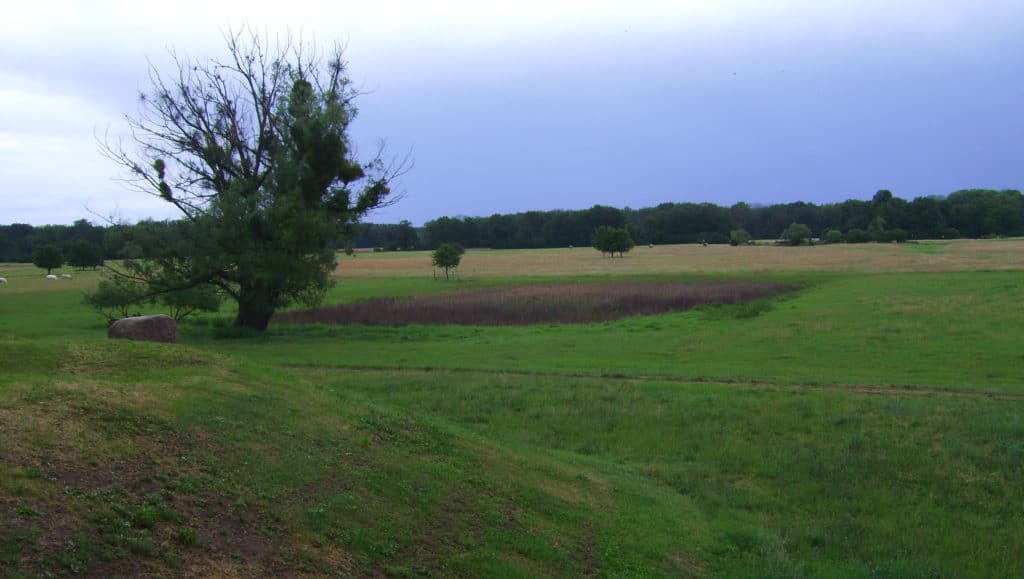
Journey to the Dessau Wörlitz Garden Estate
Worlitz Garden is located in East Germany in the eastern part of Saxony-Anhalt between the cities Dessau and Lutherstadt Wittenberg. The river Elbe flows north of the park, the Wörlitz facilities are embedded in the wide meadow landscapes of the Elbe floodplain. Therefore the park as a cultural heritage belongs to the biosphere reserve „Flußlandschaft Elbe“ in Saxony-Anhalt. North of Wörlitz is the small town of Coswig (Anhalt), but on the other side of the Elbe. An Elbe river ferry connects Coswig with Wörlitz. From there there is a connection to the nature park Hoher Fläming.
The next airport to Dessau and Worlitz is Leipzig – Halle airport (LEJ). There you can get all services like train connections or rental car service*.
To Wörlitz by train and bike
The journey within Germany is very well possible by train*. With a combination of train and bike ride, you will have the best experience possibilities in the Elbe region. Dessau Central Station is served by many trains from Potsdam, Magdeburg, Halle (Saale) and Leipzig. The recommended bike path from Dessau Station to Worlitz Gardens is just under 17km long and leads for the most part through the landscapes of the Elbe floodplain.
Dessau – Wörlitz railway
During the summer season, the historical Dessau – Wörlitz Railway operates on certain days and times with rail buses (double-decker vehicles and partly railcars). Operators are the Dessau public utility company. In former times there was a separate Wörlitz station in Dessau, about 400m away from the main station. However, this is now part of the Federal Environment Agency based in Dessau. Now the rail buses to Wörlitz run from platform 1 of Dessau main station.
Some special trips are also offered on the route. There is a stopover in Oranienbaum, so that the manor house and the orangery can be visited there. For certain events, special trips to the Ferropolis adventure landscape and concert arena are sometimes offered. (In Ferropolis, the huge steel excavators of the old open-cast coal mines form an impressive backdrop.) For this purpose a part of the former mine railways of the opencast mine Gräfenhainichen was reactivated.
Arrival by train via Wittenberg
An alternative train journey* is possible via the Lutherstadt Wittenberg station. You can, for example, travel to Wittenberg, follow in the footsteps of Martin Luther and the church Reformation and then cycle along the Elbe river to the Dessau – Wörlitz Garden Estate. You plan your departure at the end of Dessau – or the other way round in west-east direction.
By car to Wörlitz
Next airport to Dessau – Woerlitz garden realm is the Leipzig – Halle airport (LEJ). By car, rental car* or camper van*, take the A9 motorway to the Dessau Ost (east) exit. In eastern direction it is only a few kilometres to Oranienbaum (Manor house and Orangery!) and then about 6 km to Wörlitz and Worlitz Garden. Alternative from the north is the A9 motorway exit Vockerode with direct road to Wörlitz. You can reach Wittenberg from Wörlitz or Oranienbaum via country roads to the east.
Car parking and caravaning near the Wörlitz park
A large visitor parking lot is located at the northwestern corner of the Worlitz Garden. A caravan parking space belongs to it. Directly at the parking lot a location of the Wörlitz Visitor – Information also is set up . Because the park can be entered at several places without entrance fee and cash box, there is an access with fast connection to the popular Rose Island nearby. Via the Rose Island ferries or via the entrance at the South Sea Pavilion you are also quickly at the labyrinth or in „Neumark’s Garden“.
A smaller parking lot is located on the Erdmannsdorff – road into town opposite the Wörlitz – Lake. From there you have quick access to the English Grounds of Woerlitz at the entrance of the „Eichenkranz“ inn and the gondola station. However, it is only recommended to use this parking lot in the low season. The parking area is very limited and therefore overcrowded in times.
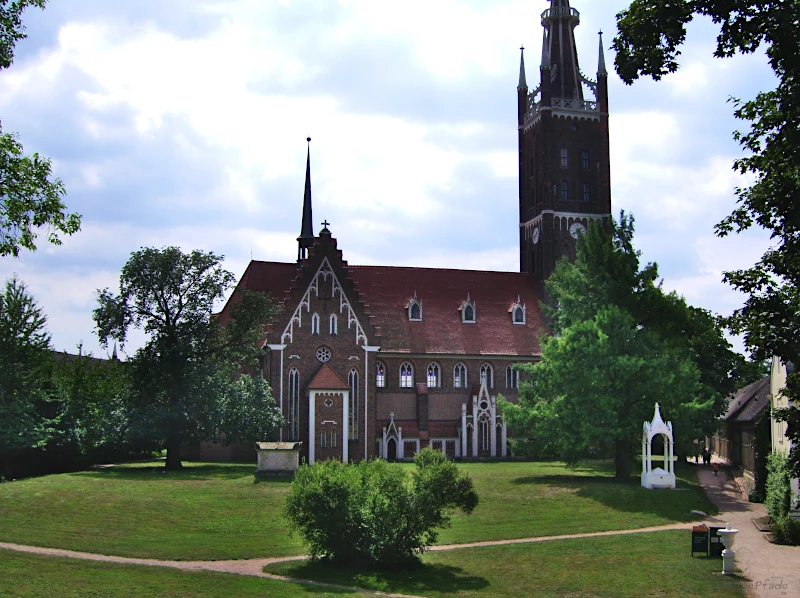
Gastronomy in Wörlitz
Within the park the supply is limited to a small snack – offer. Considering the size of the area, I recommend you to pack at least a few „Bemmen“ and something to drink (if your Saxon language knowledge is not that advanced, just translate „Bemmen“ with „sandwiches“ 😉 ).
But in front of the Worlitz park there are several possibilities on different levels. The „Eichenkranz“ – „oak wreath“ inn is only one of them, maybe the most original one from the beginning. Vis – a vis you find „Zum Grünen Baum“ – „the green tree“ (restaurant, otherwise there are in the warm season a lot of green trees).
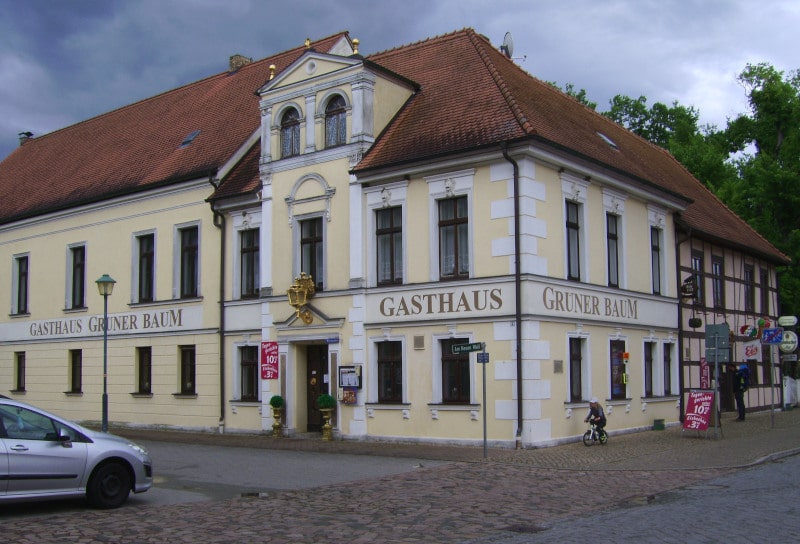
And the open-air restaurant, which in GDR times (during socialist era in east Germany) served the masses of visitors at long garden tables as if on an assembly line, still exists. However, it has now been slimmed down and geared to fewer visitors, but with a greater variety of offers. I have childhood memories of warm, sunny summer days, where after a good 2 hours drive with the east german Trabant – Car „Trabbi“ we looked for places at these tables under big shady trees and then one of us had to occupy these places, while the others would have queued at the buffet and would have chased for refreshments before visiting the park. Already at this time the corridors and grottos of the „Romantic Partie“ as well as the Chain Bridge in the Wörlitz Park were favorites on the Holiday – Adventure – List of Children and Young at Heart.
Those who prefer to eat cheaply today take a few steps further into the city – diagonally left of the street an Asia-Döner snack bar supplies the economy foxes.
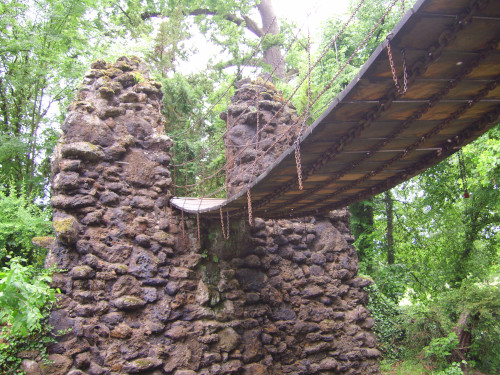
Accommodation near Wörlitz Park – Hotels and Appartments
The spacious Worlitz gardens and the many attractions in the surroundings of Woerlitz, the Biosphere Reserve River Landscape Elbe, Oranienbaum with castle and orangery and many smaller details of the garden landscape of Anhalt – Dessau make a stay of several days worthwhile. Conveniently in one of the small hotels, cottages and pensions at the park in Worlitz, which provide short distances as well as convenient breaks between the exploration tours in the garden country Dessau – Worlitz.
In ****Hotel Landhaus Worlitzer Hof* are available single and double rooms, an apartment and several suites. One of the rooms is prepared for wheelchair users, the whole hotel is barrier-free. From the hotel Worlitzer Hof it is only five minutes walk to the gondola – landing stage in the Worlitz Gardens for a gondola ride on the lake and canals. The hotel also offers its own wellness program with sauna and massages. Pets are allowed. The hotel is located directly at the market of Wörlitz. There is free parking at the hotel, also handicapped accessible.
Double and single rooms are available in the „Hauenden Schwein“ (beating pig) Hotel in Worlitz*. This is an old inn. Holidays with dog are possible on request. Breakfast is included. The park and manor house in Wörlitz are about 500m away from the hotel.
If you would like to take a stroll in the garden and take a refreshing dip in the pool, then the Wörlitz ****Ringhotel Zum Stein* is your address. Sauna and loungers, Roman baths and spa treatments as well as indoor and outdoor pool can round off your day. Rooms are available from single to family rooms. Bicycles can be rented in the Hotel, the park and manor house in Worlitz are about 1.2 km away.
The Parkhotel Worlitz* is a small hotel very close to the Worlitz Garden Kingdom with rooms of simple equipment. However, it is not one of the top addresses in Worlitz. In the Parkhotel you can also use a sauna for a fee. Breakfast at the Parkhotel Worlitz is extra. Private free parking is available at the house. Pets are allowed in the Parkhotel on request.
The Pension am Park* directly in Wörlitz is a cosy little accommodation for two guests each. It is located in an old half-timbered house at the market and just 300m away from the manor house. Parking facilities are available on the street. During the warm season, a pair of storks in the nest behind the house provides entertainment.
The Hotel “ Elbterrassen im Wörlitzer Winkel*“ are about 4 km away from the park, but are located directly on the Elbe river. So you can already enjoy the calming view of the gently flowing river at breakfast. From single rooms to 4-bed family rooms there are various hotel room sizes. You can also eat on site in the restaurant. Bicycles for exploring the surroundings are available on request.
(Cycling) hiking maps and literature about the Garden Estate and Wörlitz Park
As a cycling and hiking map for the region, we recommend the german edition Lutherstadt Wittenberg und Umgebung* (en: Wittenberg and surroundings) from the A.Barthel Verlag. With a scale of 1:50,000 it is just right to find enough details, but not to „get off the map“ in a few hours by bike. In addition to Wittenberg and the Garden Estate between Worlitz and Oranienbaum, it contains the Hoher Flaeming, another very beautiful natural landscape as a supplement (Hoher Flaeming Nature Park in southern Brandenburg).
Wörlitz Park – and Garden Estate – Literature
There is a lot of literature about Dessau – Wörlitz Garden Estate and the Wörlitz Park in German and partly in English. Understandable with 20 years of world cultural heritage and a lot of 200 years of park and garden landscape. Here is a selection:
The Garden Grounds of Woerlitz in the Dessau-Woerlitz Garden Realm* is a small booklet with an overview of the facilities of Wörlitz and their history.
A illustrated book „Das Dessau-Wörlitzer Gartenreich – Ein Paradies für das Diesseits„* (The Dessau-Wörlitz Garden Estate – A Paradise for this World) scores particularly well with its pictures from different seasons. Photographer Peter Kühn collected over many years his picture motives in the whole area of the Garden Estate, from Wörlitz Park to manor house and orangery Oranienbaum, Mosigkau, Luisium, Georgium and Großkühnau and can invite the viewer to experience the paradisiacal character of this landscape. Anyone who has looked at this book will want to come back again and again – no matter what time of year it is.
The Dessau/Worlitz: Architectural Guide* is more a reference book on architecture with an overview of over 120 buildings and objects. This book leads through the many and varied facilities from the time of the Prince of Anhalt- Dessau, but also gives an insight into the later developments with the Bauhaus and the new buildings from the socialist era in the war-torn city of Dessau.
Your tip in your social media channels!
If you liked the article, please share the link on your social media channels! Maybe you’ll soon be able to take a trip to the Wörlitz Park together with your friends! Thanks 🙂
At the end here a little „FAQ“ as summary:
The german Worlitz Garden realm is located in eastern Saxony-Anhalt on the Elbe River between Dessau and the Luther – City Wittenberg.
The Woerlitz Garden Realm was created by Duke Leopold Friedrich Franz of Anhalt – Dessau from 1764. The most important helper was his friend Friedrich Wilhelm of Erdmannsdorff, who was responsible for many details of planning and construction supervision.
You can discover the Woerlitz Park in many different ways. From a simple walk to gondola rides in the rowboats to adventurous explorations in the grottos and caves of the Hermitage or across the swaying Chain Bridge, the variations range. Geo-caching is also possible in the park. Garden lovers and botanists will find a rich variety of plants. If you are interested in history, you can take one of the guided tours of the palace and park.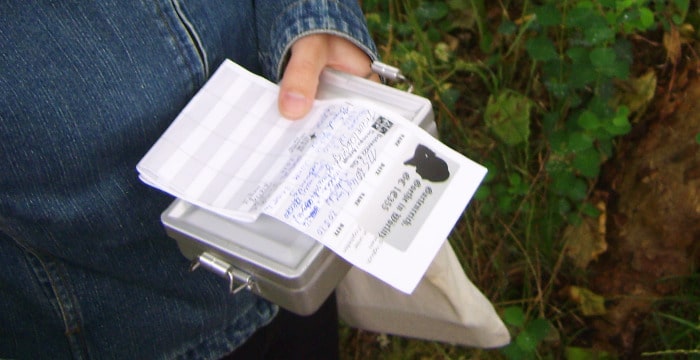
By car via Dessau – Oranienbaum (motorway A9) or Wittenberg. A large visitor parking lot is signposted. Or by train to Dessau. In the summer season, a rail bus of the Dessau-Wörlitz Railway runs to Wörlitz. The most beautiful way to get there is by bicycle, e.g. via the Elbe river Cycle Path.
The Wörlitz Park is open all year round. Since the park grounds are freely accessible and no entrance fee is charged, the extensive parts can be explored even on several days. Only the hand-operated ferries cost a small fee, as does admission to Wörlitz Castle and the Gothic House.
Dogs are allowed in the Gardens, but they must be kept on a leash at all times.
Cycling is not allowed in Woerlitz Gardens. However, there are paths around the park free for cyclists, so that the various entrances can be reached quickly and so distant parts of the park can be reached by bike.
Worlitz Gardens are the first planned landscape park in the German-speaking world. It is part of the „Garden Realm of Dessau – Woerlitz“, where an entire principality was purposefully transformed into a garden landscape. This included not only representative parks and buildings, but also progressive approaches to improving the education of the population and the further development of gardening and agriculture.
Reference to advertising
Some links in this article are marked with *. These are so-called affiliate links. If you click on the link and buy or book something in the connected shop, sunny trails blog will get a small commission to build this blog. Nothing will be more expensive for you, because the commission has already been taken into account in the pricing.
Picture source: product pictures – producer or vendor



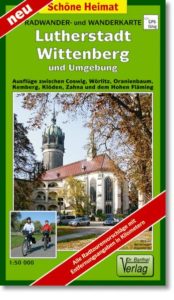
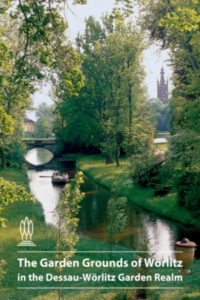
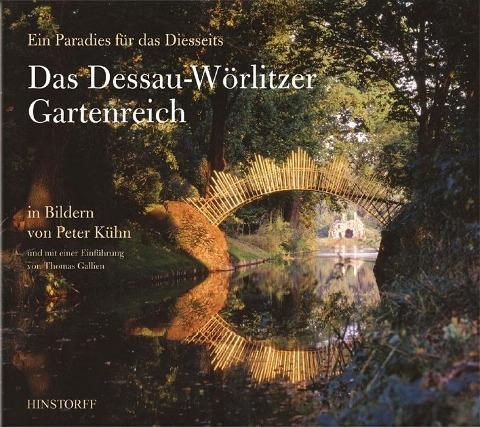
This post is a breath of fresh air. You’ve managed to explain complex concepts in a simple and understandable manner.
Great post! I learned something new and interesting, which I also happen to cover on my blog. It would be great to get some feedback from those who share the same interest Thank you!
Impressive posts! My blog about Electricity/Electricians also has a lot of exclusive content I created myself, I am sure you won’t leave empty-handed if you drop by my page.